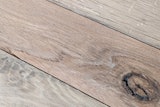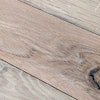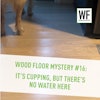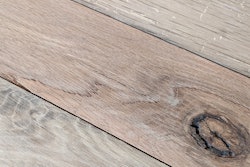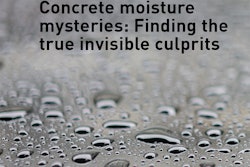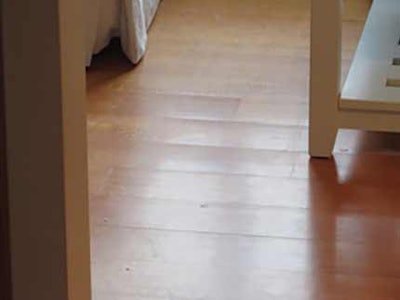
The Problem

The homeowners wanted an inspection due to the crowning and gapping of their plank floor.
What Happened
The ¾-inch, 5-inch-wide red oak flooring was nailed down over a plywood subfloor. The plywood had aluminum transfer plates for radiant heat installed underneath it and was itself fastened to engineered joists with paper-faced fiberglass insulation. The flooring was installed in the kitchen, master bedroom and office.
Two years later, in December, the entire lower level of the home—one floor below where the wood flooring was installed—had water damage from a burst frozen water pipe, creating 1½ inches of flooding throughout the level. A restoration company arrived after four days and removed all the carpeting. They used three large commercial dehumidifiers as well as air movers to dry the space.
Within a week after the restoration work was done, the wood flooring showed signs of gapping and crowning.
The Inspection
Walking through the home, from a standing position I could see several boards throughout the rooms that were crowning and had gaps between them. A machinist’s steel scale and feeler gauge in several random locations showed the board crown height ranged from 0.008–0.012 inch. It also showed the gapping of the boards ranged from 1⁄32–3⁄32 inch.
The home’s temperature on the first floor was 73 degrees Fahrenheit, and the RH was 35 percent. The lower level had similar readings. A laser temperature reader showed the subfloor temperature was 88 degrees; moisture readings for the subfloor ranged from 4.4–5.0 percent. Moisture readings of the wood flooring ranged from 5–7.1 percent.
Crowning of solid boards is caused by an imbalance of MC between the tops and bottoms of the boards. Being drier on the bottom than at the top causes the flooring bottoms to shrink, resulting in the crowning. In this case, drying work in the lower level of the home dried the wood flooring’s subfloor, and the radiant heat also lowered the RH in the joist spaces, causing the flooring to release moisture from the board bottoms.
The gaps were due to the crowning literally lifting up the flooring in the middle, drawing in the board edges.
How to Fix the Floor
The ambient conditions in the home must return to what had been normal for the home before the water damage happened. The increase in RH during the spring and summer months should help return the MC to more balanced levels so that the boards will once again be flat. However, whether the boards can return to being flat depends on how long they were crowned.
In the Future
Wood is hygroscopic, meaning it will always shrink or swell to be in balance with the relative humidity. If we want wood flooring to perform consistently, we need to avoid extremes in RH and temperature.











